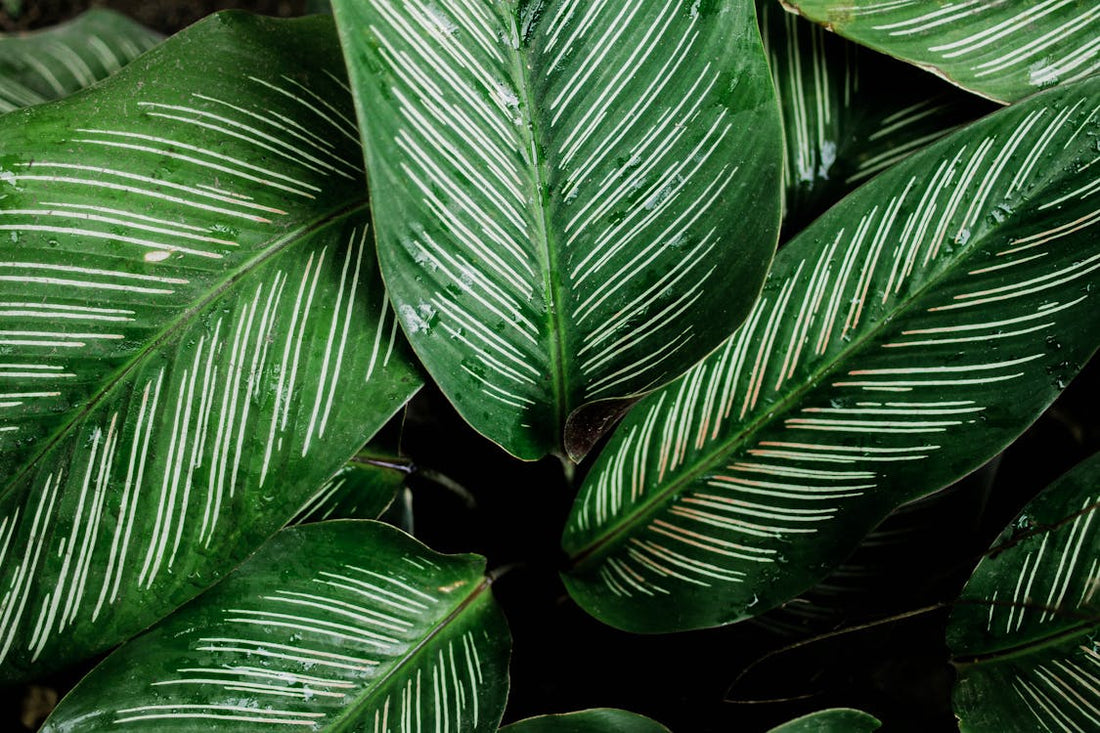
The origin of the Calathea: a plant with exotic roots
Share
The Calathea originates from the tropical rainforests of South America. With its unique leaves and vibrant colours, it is a piece of nature in the home. In this blog, we will delve deeper into the origins of the Calathea and what makes it so special.
Contents:
1. Tropical origin and habitat
The Calathea grows naturally in the shady, humid rainforests of South America. It is used to high humidity and filtered light, which makes it sensitive to dry air and direct sunlight.
2. Unique leaf patterns and colours
What makes the Calathea so special are the beautiful leaf patterns and colours. There are different types with different leaf patterns, from striped to spotted, and often with striking shades such as dark purple and green.
3. Special feature: living leaf
The Calathea is known for its 'living leaves'. This means that the leaves move in response to the light: during the day they spread out, while at night they fold up. This makes the plant a fascinating addition to your interior.
4. Symbolism and meaning
In some cultures, the Calathea symbolizes new beginnings and growth, making it a popular gift choice. Its tropical look and vibrant leaves bring a touch of nature and tranquility into your home.
Conclusion:
The Calathea is not just a houseplant, but a plant with a rich background and unique properties. Its origins in the rainforests and its vibrant leaves make it a special addition to any plant collection.
